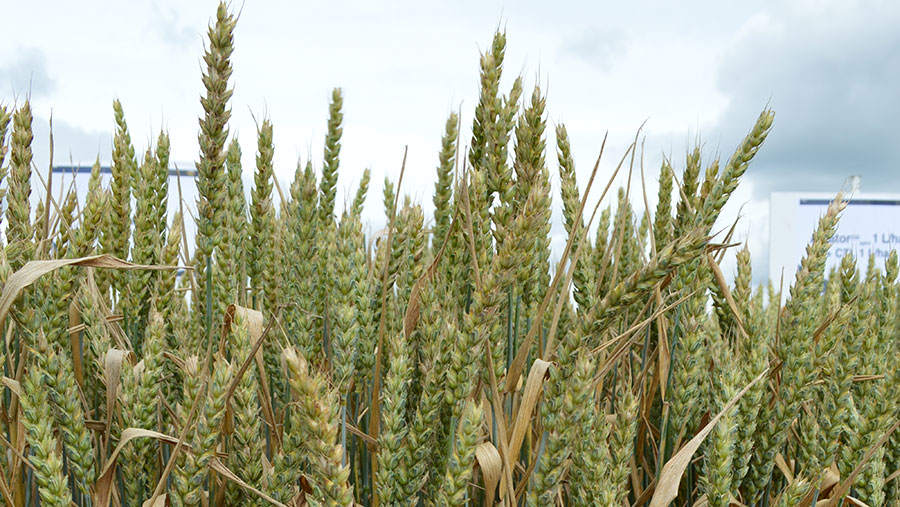Grow lower risk winter wheat varieties to save fungicide costs
 © David Jones
© David Jones Growing low risk winter wheat varieties with good disease resistance will give growers more flexibility and the ability to trim fungicide costs.
Wheat yields from varieties grown without fungicides show a close relationship to their septoria resistance, with top yielders such as Evolution, Motown and Siskin having good tolerance against wheat’s most yield-sapping disease.
Paul Fogg, crop production technical lead at agronomy group Frontier, says varietal resistance shows up well when comparing a variety such as Siskin with an older one with poor disease resistance such as Kielder.
“Genetics offers the first line of defence before reaching for the chemical can, and this will give growers more flexibility and the ability to manage inputs,” he tells Farmers Weekly.
See also: Septoria resistance now biggest factor in wheat choice
Dr Fogg says that when using varieties with good disease resistance such as Siskin in late-drilled, low disease pressure situations, it may be possible to cut back on fungicide use
In this scenario, a T0 March fungicide might be just a chlorothalonil protective spray rather than adding in an azole fungicide, while a T1 April treatment could have a reduced rate of SDHI fungicide, or even no SDHI at all, in an azole-chlorothalonil mix.
Low risk, high risk
He says varieties such as Evolution, Motown, Freiston and Siskin are the best of the low-risk varieties, while Cordiale, Reflection and Diego are at the high-risk end in terms of disease resistance.
Dr Fogg adds within Group 2 milling wheats, Siskin has a score of 6.8 for septoria resistance and Cordiale has a 4.8, so growers would have more confidence in growing the former variety.
“If you invest in genetics, you can plan better and use a bespoke fungicide programme,” he adds.
- Dr Fogg was speaking to Farmers Weekly after giving a presentation at a recent Frontier regional growers briefing.

